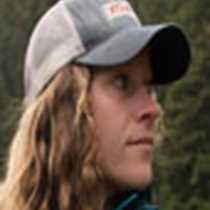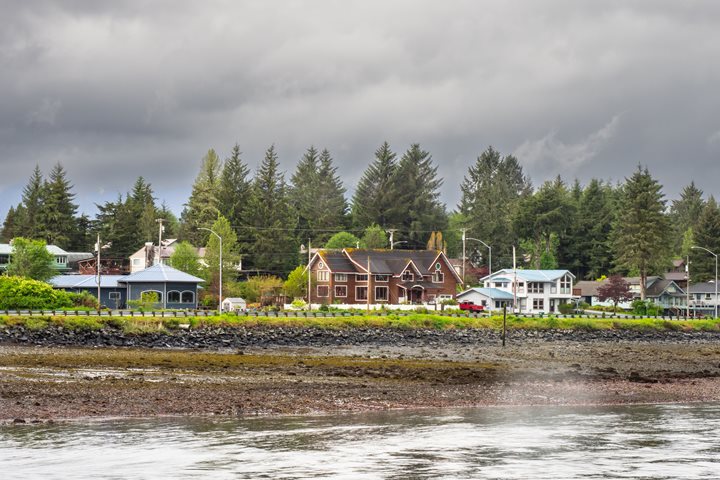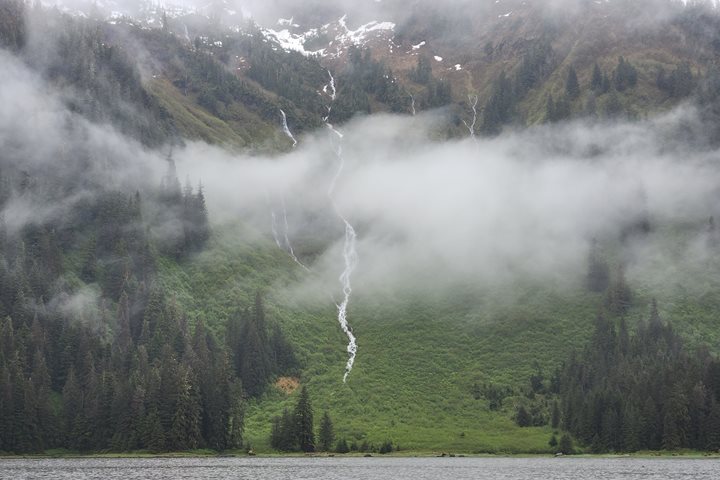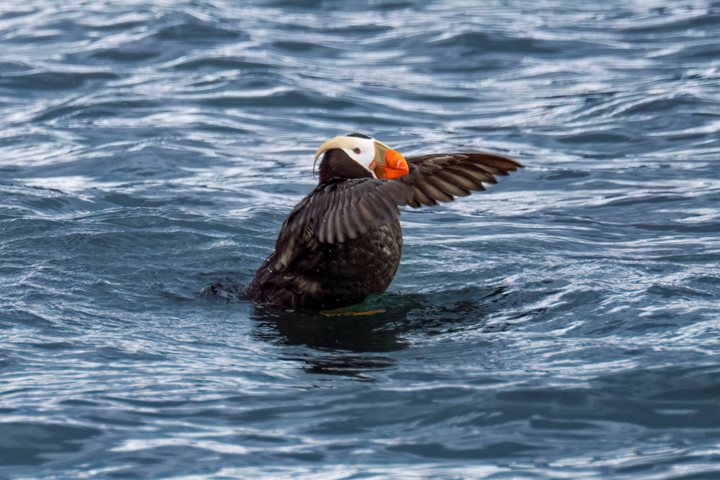Wednesday morning, June 24th aboard National Geographic Sea Bird guests awoke to a bright clear day. The ship was anchored at the Inian Islands, an archipelago with a direct opening to the Pacific Ocean. This special place allows rich flow in from the open ocean to these more protected areas, where marine animals can feed on the organisms the water houses. Though the region had been long inhabited by the Tlingit tribe of Southeast Alaska, the first time Europeans caught sight of the area was in the 1700s, on an exploratory journey from Russia led by the Danish navigator Vitus Bering.
Bering’s expedition was successful in finding land, but not in stepping foot on it. When the Tlingit tribe arrived in full force, Bering immediately backed down and ordered his ship to turn around. Despite this, many specimen were cataloged on this trip by the scientist aboard; Georg Steller. Steller identified many animals and plants along this expedition, including the Steller sea lion and the long-extinct Steller’s sea cow. Though the exploration inevitably failed, this is the first instance of science in Southeast Alaska.
Morning cruises led guests on many paths winding around the islands, watching the Steller sea lions crowd each other and bark for space, watching tufted puffins sit quietly on the water’s interface, and observing sea otters meticulously crack open today’s lunch. The tide was swift and relentless, showing off great views of sideways kelp and happy sea creatures.
For the afternoon the ship repositioned to George Islands, a gorgeous landing in Cross Sound. Guests were able to kayak all the way around the bay and to a spectacular arch, carved from millions of years of tidal flow. The dive team enjoyed photographing incredible undersea wildlife to share with the ship during an informative recap, and photo enthusiasts went out for a nice walk. Near the end of the day, as kayakers were still returning from the arch, in the near distance a pod of killer whales passed by, intently moving towards an unknown goal.
When kayaks were loaded up and the anchor lifted, killer whales returned to the National Geographic Sea Bird for a phenomenal after-dinner show, coming up for air in a perfectly synchronized six-whale pattern, and spy hopping for all to see. It was a truly special and unique day out here, in the wilderness of Southeast Alaska.







